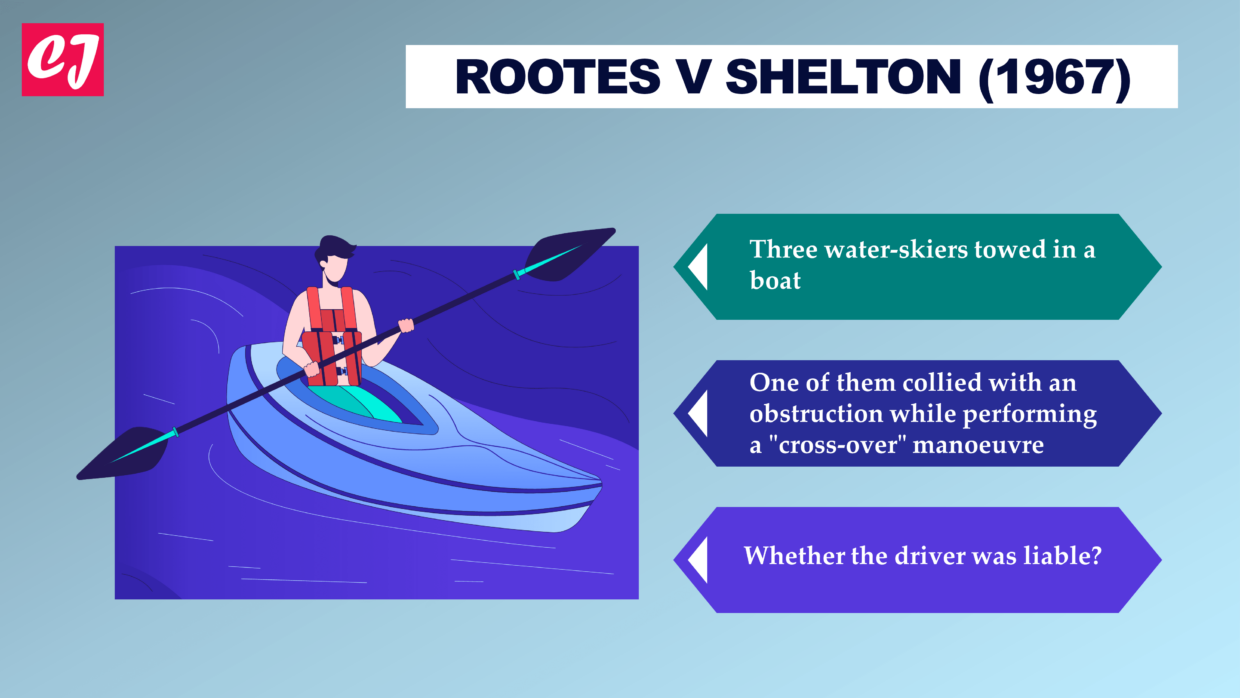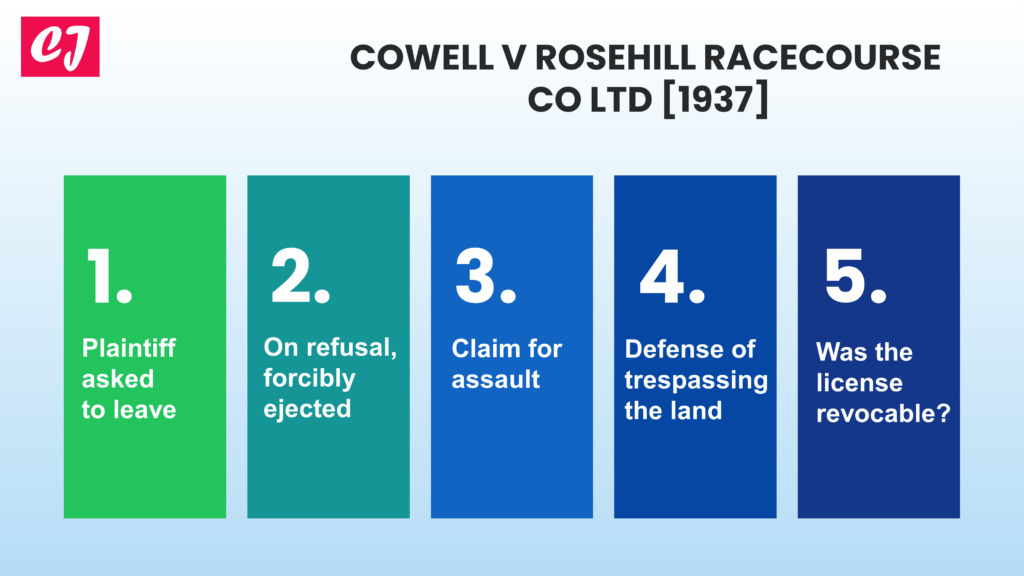
A Summary of Rootes v Shelton (1967) Case
Rootes v Shelton (1967) is a tort law case that highlighted the extent to which participants in a sport or pastime may owe a duty towards each other. What constitutes an inherent risk in a sport for which there will be no liability? Whether a participant can be deemed to have voluntarily assumed a risk? The case deals with such matters. It concerns a water-skiing activity in the Macquarie River at Dubbo. Given below are its details:
| Case name & citation: | Rootes v Shelton [1967] HCA 39; (1967) 116 CLR 383 |
| The concerned Court: | High Court of Australia |
| Decided on: | 18 October 1967 |
| The bench of judges: | Barwick C.J., McTiernan, Kitto, Taylor and Owen JJ. |
| Area of law: | Negligence; Duty of care; Voluntary assumption of risk |
Facts of the case (Rootes v Shelton)
In the given case, Rootes, an experienced water skier, was engaged in a challenging and dangerous water-skiing manoeuvre called “crossovers.” He, along with fellow water skiers, was being towed by a boat driven by the defendant, Shelton. While performing this activity, Rootes collided with a stationary boat that was in the water, which resulted in severe injuries.
He could not see the boat due to water spray in his eyes.
He filed a case of negligence against Shelton claiming that Shelton had failed to take proper care in controlling the boat and had not warned him of the presence of the stationary boat.
Issue
Was the defendant liable for breach of duty of care?
Judgment of the Court in Rootes v Shelton
The High Court decided in favor of the plaintiff. As a result, he recovered damages from the respondent, the driver of the towing boat. The Court took the following view.
When a participant engages in a sport or activity, they may be held to have accepted certain inherent risks associated with that activity. But this does not completely absolve one participant from a duty of care towards others. Whether or not such a duty exists and what is its extent – shall depend upon the circumstances of each individual case. Many factors come into play and the rules and regulations governing the sport or activity can be only one of such factors.
Further, the judges found that to acknowledge that the plaintiff voluntarily assumed the risk of colliding with an obstruction in the water is one thing. However, it is an entirely different matter to assert that the plaintiff voluntarily accepted the risk that the defendant (the boat driver) would negligently fail to warn him about the presence of such an obstruction or would fail to exercise proper care in steering the boat. The defendant, in the present case, owed a duty of care to the plaintiff and his failure to give sufficient warning of the stationary boat and to exercise due care in steering so as to avoid the collision could be regarded as a breach of that duty.
Thus, the defendant was held liable.
Takeaway
When there is an injury in a sports activity, it is crucial to determine whether other participants owe a duty of care to the injured party, whether there has been a breach of that duty, and whether the injured party has voluntarily assumed the risk of injury resulting from a breach of that duty.
List of references:
- https://s3.studentvip.com.au/notes/24018-sample.pdf
- https://fpbl.com.au/fpbl2022/Cases/rootes.htm
- https://www.sciencedirect.com/science/article/pii/S0004951414611818?ref=pdf_download&fr=RR-2&rr=805e6484ecbb8e92
You might also like:
More from tort law:

